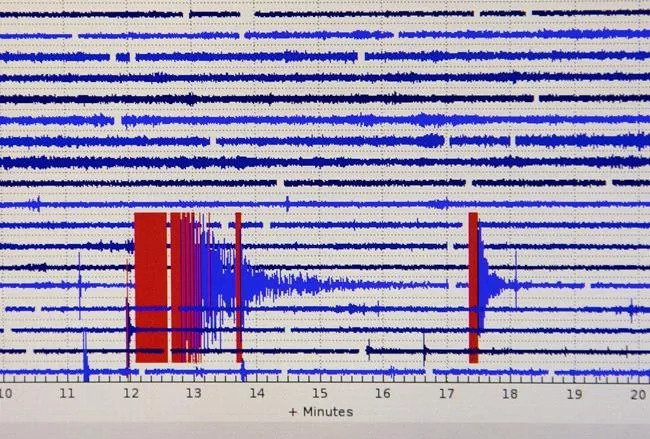
MEXICO CITY (AP) — Guatemala violated Indigenous rights by permitting a huge nickel mine on tribal land almost two decades ago, according to a ruling from the Inter-American Court of Human Rights Friday.
The landmark verdict marks a monumental step in a four-decade struggle for Indigenous land rights and a long, bitter legal battle, which has at times spilled into the streets of northern Guatemala.
It also comes at the close of the U.N. climate summit COP28, which stressed the importance of renewables and energy transition minerals like nickel more than ever.
According to a verdict read from Costa Rica in the early hours of the morning, the Guatemalan government violated the rights of the Indigenous Q’eqchi’ people to property and consultation by permitting mining on land where members of the community have lived at least since the 1800s.
In its written sentence, the court linked the human rights violations to “inadequacies in domestic law,” which fail to recognize Indigenous property and ordered the state to adopt new laws.
Leonardo Crippa, an attorney with the Indian Law Resource Center who has been researching and representing the community since 2005, said that the finding against the state of Guatemala was a once-in-a-century advance for Indigenous rights in Guatemala and internationally.
“All countries in Latin America are going to look at this decision," Crippa said. “All courts will have to secure that any decision that this made on mining, on Indigenous lands or titling of Indigenous land is done in a way that is consistent with what the court decided today.”
The court also ordered an immediate stop to all mining activities, gave Guatemala six months to begin awarding a land title to the community, and ordered the creation of a development fund. No further mining can take place, it said, without the community's consent.
The Guatemalan environmental department responsible for initially permitting the mine didn't immediately respond to an Associated Press request for comment.
For Rodrigo Tot, a local leader, the verdict is vindication of a lifelong battle against the mine and the state which took his own son's life.
Guatemala first granted massive exploratory permits at the Fenix mine in eastern Guatemala to Canadian company Hudbay just under two decades ago. In 2009, the mine’s head of security shot Tot's son dead. Hudbay sold the site to a local subsidiary of Swiss-based Solway Investment Group two years later.
“Losing your life doesn't matter, but only for something important,” Tot said. “Within our anthem there is a part where it says ‘overcome or die.’ If I die defending my land, then I believe it is something that will remain as the history of our struggle.”
Over a decade of national and now international litigation after the murder of Tot's son, documents were leaked appearing to show the mine attempting to divide the community by bribing some locals to testify in court in favor of the mine.
In response the U.S. Treasury sanctioned two Solway officials implicated in the accusations in November 2022. The ruling Friday noted the community suffered “violence, threats and harassment,” from 2006 to 2019. The U.S. Treasury sanctions against the two Solway employees, who were fired by the company, were not part of the court’s decision Friday.
A spokesperson for Solway wrote that the company and its subsidiary were “not a party to this case” and that “disagreements regarding the mismatch in land demarcation began even before our company acquired the project.”
She did not respond to questions about bribery allegations or the community's harassment up to 2019, eight years after Solway's subsidiary acquired the site.
While Crippa said it was encouraging that the court's ruling came with strict timelines, Tot admitted he expects there will now be a battle for compliance.
“It doesn’t end here. Our fight is going to go on,” he said. But "it encourages us when we see that there are people who also value our struggle.”
The Fenix mine isn't the only conflict between international mines offering clean energy minerals and Indigenous communities in the region, nor is it likely to be the last.
Indigenous and environmental protests rocked Panama for weeks earlier this year when the government approved a 20-year contract for a Canadian company's local subsidiary. Eventually, a ruling of the country's supreme court struck down the contract and ordered the copper mine to close.
Meanwhile, one study published last year calculated that over half of existing and planned critical mineral mines sit on or near Indigenous land. In remarks at COP28, U.N. Secretary-General António Guterres warned of the potential for exactly this type of conflict as demand for minerals like nickel grows.
“The extraction of critical minerals for the clean energy revolution — from wind farms to solar panels and battery manufacturing — must be done in a sustainable, fair and just way,” Guterres said.
___
This story was first published on Dec. 15, 2023. It was updated on Dec. 16, 2023, to add that the two mine employees sanctioned by the U.S. Treasury had been fired by the mine's owner and were not part of the court's decision.
___
Follow AP’s coverage of Latin America and the Caribbean at https://apnews.com/hub/latin-america
Daniel Shailer, The Associated Press












